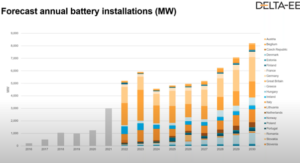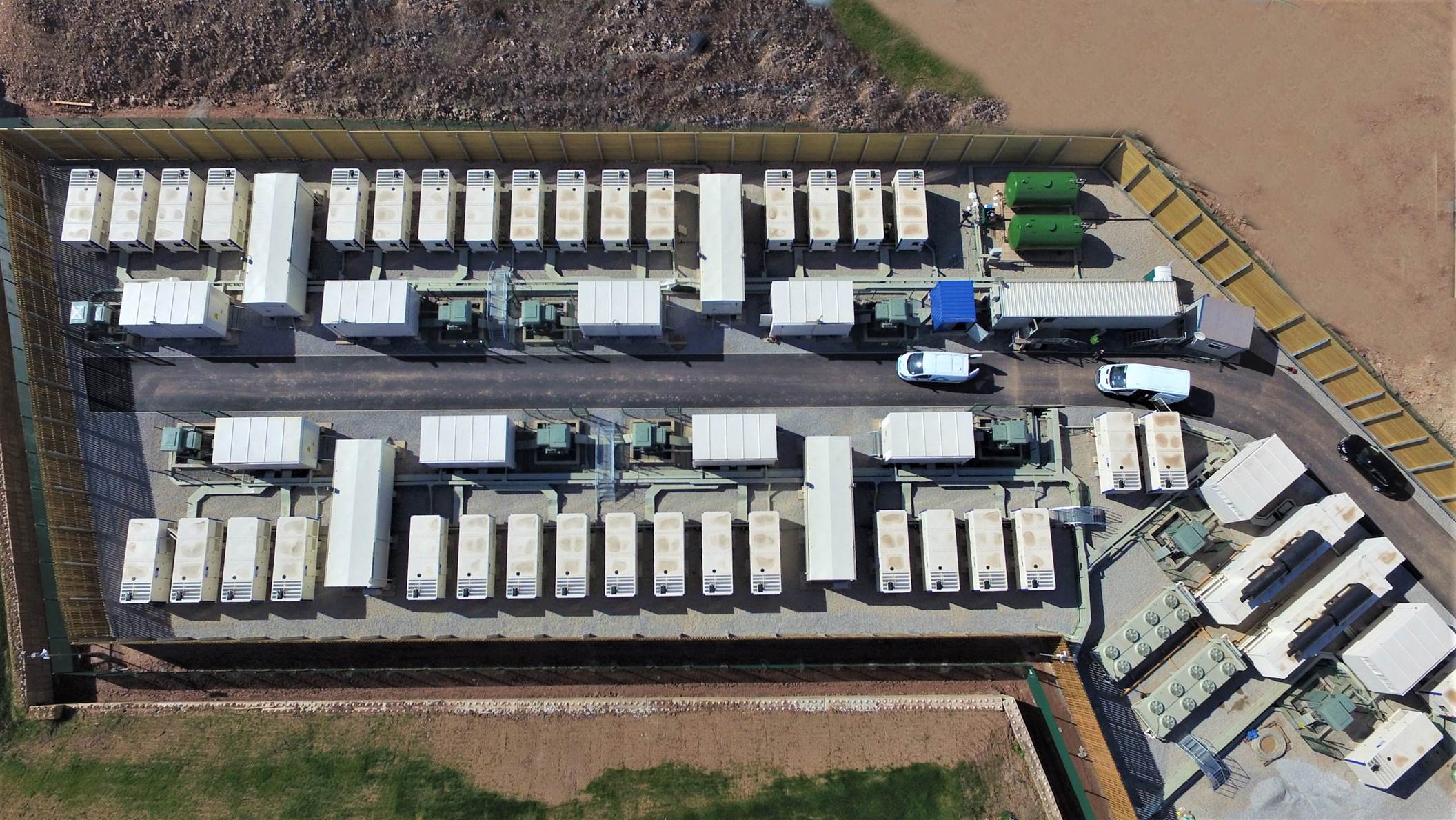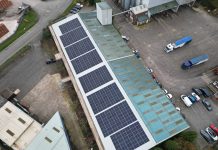Europe’s and the UK’s current deployments of grid-scale power storage will leave the continent falling as much as two-thirds short of the industry’s 200GW capacity target set for 2030, industry experts say.
Scarcity of lithium looks likely too to flatten the buildout curve for despatchable capacity in the middle of this decade, according to trade body the European Association for Energy Storage (EASE).
Storage experts from EASE and their Edinburgh-based consultants Delta EE this week presented forecasts from their sixth annual market monitor findings, covering 24 countries. They address whether the continent can reach its RePowerEU targets without an explicit policy on grid-scale buffering & despatch of clean power.
Britain and Ireland currently provide around one third of the continent’s approximate 10GW of grid-participating batteries, according to EASE’s analysis.
Almost all was installed since 2019. To meet the 200GW “double ton” by 2030, annual deployments Europe-wide must drastically accelerate – even on a straight-line basis – to 14GW a year, researchers warn.
Last year Europe deployed only 3GW, one third of it in homes, according to Delta EE’s John Ferris.
Light on lithium
Doubling the continent’s existing volumes this year, around 5 GW will be installed, the analysts estimate. Britain, Germany, Ireland and Italy together account for three quarters now; by 2030 they’ll still account for half, or so the researchers predict.
Bigger batteries, classed as 50MW and above, are doubling this year, to 33 sites. But even such per-unit expansion leaves Europe’s combined capacity by 2030 likely to fall a debilitating 130GW to 140GW short of the 200GW envisaged by Brussels.
The EU Commission repeatedly promotes its storage plans in recent blueprints such as RePowerEU, Fit for 55, and the post-Covid vision NextGenerationEU. See country forecasts below.

Ferris pointed to lithium shortages, and diversion of the metal into vehicle batteries, as a drag predicted to stall the continent’s storage roll-out in the three years to 2027.
“We do see some headwinds at very least in the short term. The lithium deficit is largely a reflection of the expected growth of EVs and that stationary storage is a small proportion of the total battery production capacity,” he said.
Wholesale trading and new ancillary services mark out Britain’s attractiveness for investors. Delta-EE expect the nation to reach 14.4GW installed by 2030.
Last year McKinsey initiated a study group of global CEOs, assessing the need for long-duration storage at grid scale at anything up to 24 hours.
A YouTube link to this week’s EASE and Delta EE presentation is available via registration here.




